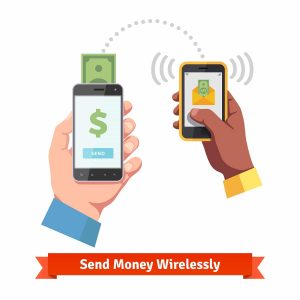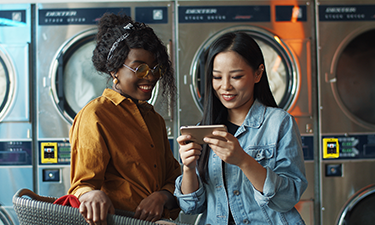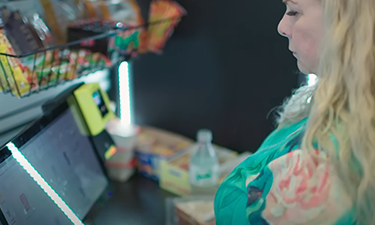The novel coronavirus could mark 2020 as the beginning of a global cashless society
Cash is filthy. Cash is dirty. And this is not a commentary on capitalism.
Even before the novel coronavirus came along and made us much more conscious about what we touch, researchers have been trying to tell us how paper money turns our wallets into a portable petri dish teeming with microscopic life.

The global health crisis of COVID-19 has only forced institutions around the world to rethink contact with questionable surfaces.
China declared a war on cash as early as February 2020, disinfecting and even destroying potentially infected paper money. Federal reserves in the US and South Korea responded by quarantining cash to contain the spread of the virus.
Soon after, the World Health Organization (WHO) advised people to wash or sanitize their hands after handling physical money. And service providers world over became more emphatic in their demand for cashless transactions to ensure the health and safety of both customers and employees.
Adapting to the ‘new normal’
It did not take long for people’s spending habits to change. By April, the use of ATMs in the UK had fallen by about 60 percent compared to a year ago. Subsequent consumer research found that only one in 10 still wanted to pay in cash but it was not being accepted.
ATM withdrawals in Switzerland also fell by nearly 50 percent between mid-March and mid-April, while more than 11,000 vendors joined a contactless payments system to allow users to make NFC payments and tap and go cards.
In several countries, including Canada, Greece, Ireland, Malta, Poland, and Turkey, Mastercard and Visa actively worked with the governments to provide a touch-free experience to customers and make it easier for merchants to accept contactless payments. This means cardholders could purchase more of what they needed and simply tap to pay, without having to use a PIN pad.
A cultural shift was noticed in cash-loving Germany as well. For the first time ever, both the country’s biggest retailers and small businesses – who used to accept only banknotes and coins – joined the war on cash and actively began to promote the use of contactless payments.
And while data suggests that Gen-Z is more likely than other generations to embrace a wider range of alternative payment methods, interestingly in Germany, even the older, most cash-savvy customers (aged 60 and above) have embraced the change. Overall, 57 percent Germans use cashless payment methods now more than they did before the pandemic.
Japan, which is one of the most cash-based economies in the advanced world, is also contemplating a federal growth strategy to promote a cashless society culture as a response to the needs of a post-COVID era.
Investment in digital payments
This successful switch to a cashless economy could not have come without a robust digital infrastructure and the easy availability of numerous alternative payment methods.
There was a time when a credit card was the only non-cash alternate for most people. While some debated credit card safety, many did not even know how to swipe a card. The general mindset was to use credit cards only for large, special, and emergency purchases.
Today, as consumers maintain social distancing from paper money, they are comfortable leveraging cashless payment methods for small, day-to-day purchases. And they are flush with payment options. They can make payments using everything from contactless credit cards, debit cards, NFC bank cards, tap cards, and contactless card variants that support wave payment methods to other automated solutions such as TouchPay Direct, cashless ATMs, mobile payment apps, QR codes, and even wearables like the Apple watch.
In countries that still lack measures to digitize payments, the United Nations-based ‘Better Than Cash’ Alliance is leveraging COVID-19 as a springboard to fast-track the transition from cash to digital payments and advance the Sustainable Development Goals. Ethiopia, which had already made progress on its digitization roadmap before the pandemic, is now encouraging startups to launch contactless payment products, such as pay card and NFC payment devices, and facilitate social distancing.
Spearheading shift to a cashless society
With more people staying home, it was anticipated that global online payment platforms will witness an increase in payment volumes from online shopping, music and video streaming services, and even online gaming. But e-commerce plays only a small role in the evolving consumer payments landscape.
The accelerated move to a new cashless paradigm is stemming from a wide variety of industries and economic sectors that are not necessarily associated with cashless or contactless spending, traditionally.
Here are the top 17 ways COVID-19 is steering us toward a cashless economy:
1. Peer to peer payments in a cashless society
Poorly planned lockdowns and shelter-in-place orders in many countries left countless people stranded or confined to their homes for weeks this year. The use of person-to-person (P2P) payment apps, in this scenario, surged dramatically for sending money to loved ones in need, paying back neighbors for groceries, or sending rent to homeowners. Such is the lighter fluid thrown on an already burning fire, that P2P service provider Venmo had to increase its sending limits for person-to-person payments by 40 percent to $4,999.99 per week.
And while millennials have been the early adopters of P2P services, the use of P2P options has amplified among other age groups too. According to US-based Zelle, more than half of the people sending money via its P2P network since March 2020 are ages 25-54. The use among baby boomers ages 55-72 is also up, Zelle says.
Smartphones facilitate complete transactions and remove the need for cash or a physical card to interact with a POS (point of sale) machine. Online payments are completely remote while proximity payment is used in attended and unattended retail businesses. For contactless mobile payment, most proximity payment methods are still backed by credit and debit cards, which are often stored in an e-wallet.
2. How Grocery and Retail Stores are adopting to a cashless society

The world’s largest retailer, Walmart, rolled out a no-contact payment option for its patrons even before the US Centers for Disease Control and Prevention (CDC) issued an official guideline to grocery store and food retail workers, asking them to encourage customers to use touchless payment options. While earlier, self-checkout customers had to select a payment icon by touching a screen, the new option at Walmart’s cashless stores allowed them to simply scan a QR code using their smartphones.
Whole Foods has created separate checkout lines for customers who use good-to-go pay options, while Publix Super Markets has introduced new tap to pay systems to turn more than 1,200 of its outlets into cashless stores across the US.
Kroger, meanwhile, has stopped giving customers coin change. Shoppers can either donate the change to a charity foundation at its cashless stores, or get the coin value added to their store prepaid card balance, for redemption at their next purchase.
3. Restaurants and Bars in the Covid-19 aftermath
The conversation around cashless restaurants was growing even before COVID-19 appeared on the map, but the war on cash in restaurants, bars, and food services industry is now more prevalent than ever. Restaurants and bars, seeking to revive their business after remaining shuttered for weeks, are allowing people to switch to contactless tap to go cards even for small bills.
Noodles and Company, for example, is relying on the safety of credit cards and the brand’s own pay card at all US locations during the coronavirus pandemic. And when pubs and bars reopened across England after four long dry months, customers were asked to use NFC cards and other contactless payment options rather than paying cash.
4. Can Casinos exist in a cashless society?
The American casino industry is a $261 billion sector. So far, there hasn’t been widespread adoption of cashless payment options at gambling facilities in the US, and the industry’s national trade group – the American Gaming Association (AGA) – says that the limits imposed by state legislators are to blame for that. But now, as casinos reopen, the AGA is calling on regulators to make it easier for them to adopt cashless transactions such as NFC payment on the floor. The AGA hopes the move will make casino floors approachable to the newer generation that doesn’t use cash at all. Tap to go cards will also allow casinos to design lucrative customer loyalty programs.
Casinos in Canada are also exploring cashless and other no-touch technologies, such as slot winners receiving a credit slip to be paid out at a sanitized cash cage, instead of cash money received at the machine.
5. Best practices for Movie Theatres
To help reduce potential contact between grubby bills and food-handling areas, movie theatres have decided to opt for practical contactless payment methods. When Cinemark, one of the largest movie exhibitors in the world, announced the phased reopening of its theaters, it was categorical to point out that cash payments will not be accepted at the concession stand. However, the company is going to allot a designated area at each theatre where customers will be able to exchange cash for a prepaid card.
In Thailand, Major Cineplex has installed cashless payment kiosks at its older theatres to allow moviegoers to pay for their tickets directly through NFC cards without having to touch banknotes.
6. Embracing Vending Machines in a cashless society
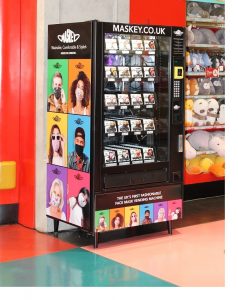
How? While government rules mandated stores to either remain shut or be operational only for limited hours this year, businesses that had vending machines installed were able to offer their products to users 24/7 – all while delivering a contact-free experience.
Given the current aversion for cash among users, operators have been quick to update their machines with cashless card readers, using digital screens to run educational videos on credit card safety, explaining different payment icons, and telling users how to swipe a card or use NFC bank cards to make purchases.
Interestingly, large-scale studies have already proven that when vending machines are equipped with cashless readers, overall sales receive a dramatic boost. But it took a global pandemic for the unattended retail industry to truly realize the importance of cashless payment options.
7. How School Campuses can operate during COVID-19
Only a handful of nations (such as Sweden and Taiwan) kept schools operational as COVID-19 spread across the world. But now, as more countries plan to bring children back to campuses, cashless schools are set to transform the education landscape.
In Malaysia, social distancing norms have increased the urgency to drive cashless schools. And it wouldn’t really be surprising to find more US institutions turning into cashless schools following in the footsteps of Seattle University. This school offers a single campus card that students can use to swipe or tap into different school buildings, purchase meals, pay for printing, or buy supplies at the campus bookstore.
Now, schools in Florida plan to offer more prepackaged items in their cafeterias to encourage cashless transactions. A cashless school foodservice system is being mulled over by Washington County as well, even as Virginia Tech works to replace its grab-and-go dining buffet with cashless kiosks.
8. Museums look to cashless payments to reopen
One of the first things that the Louvre museum in Paris did when the coronavirus outbreak started was to stop accepting cash. So, it’s only reasonable to think that contactless payments will play a pivotal role in ensuring the success of the health and safety procedures that museums put in place as they reopen.
And rightly so. When Amsterdam’s Rijksmuseum opened its gates again in June, it had a cashless payments system in place to ensure that ticket queues remained short and visitors could use contactless credit cards and wave payment options for purchases at point of sale (POS) terminals. This helped the Dutch national museum to reduce the physical proximity between museum staff and visitors.
The American Alliance of Museums’ reopening guidelines also urge museums to implement cashless POS systems like Apple Pay and contactless credit cards. Displaying payment icon images prominently at these POS systems will make it easy for guests to understand what payment methods are accepted.
9. Amusement parks lood to contactless payments
As Japan’s theme parks gradually reopen, official guidelines advise visitors to use NFC bank cards and other cashless payment methods for shopping as well as for buying food and drinks. Walt Disney World is also encouraging guests to use cashless options whenever possible, including wearable bands, debit cards, credit cards, Disney tap to go cards, and wave payment methods. Other amusement parks are adjusting to the ‘new normal’ by installing tap to pay card readers that would allow guests to play games at the arcade without interacting with a cashier.
10. Adoption of cashless in Sports and Stadiums
The Mercedes-Benz stadium went completely cash-free in March 2019. Then, it did not know it would end up saving more than $350,000 in operational expenses in one year alone. The stadium also pulled off an impressive 16 percent increase in food and beverage per capita numbers in that time period because cashless payments helped to increase the speed at concession lines.
On May 1, 2020, the stadium reps held a video conference to share their experience of going cashless, and every major sports league, right from NFL, MLS, MLB, NBA, and NHL to PGA Tour, NASCAR, and NCAA attended. As COVID-19 forces teams and sports leagues to reconsider all facets of game operations, there is little doubt that extensive adoption of cashless transaction models will come to pass across the sporting world in the near future.
11. Golf Courses natural venues for cashless payments
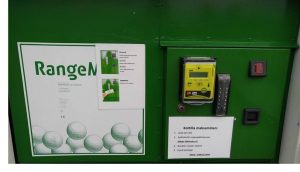
Several others have installed automatic ball dispensing machines with cashless payment card readers, enabling golfers to access the Driving Range safely and securely while maintaining social distancing from the staff and other customers alike.
12. A cashless society will transform Health Centers, Gyms and Spas
For millions who have had their lives upended by the pandemic, exercise and physical workouts have proved to be important stress-relieving mechanisms. And after several months of virtual classes, people are now raring to sweat with their peers. As gyms, fitness centers, and swimming pools reopen – albeit with limited occupancy – a cashless and contactless card modus operandi is quite prominent.
In Abu Dhabi, gyms are allowing new members to sign up only via cashless transactions and making it mandatory to book and pay for classes in advance. Leisure centers in the UK have installed new contactless systems for entering the facilities and are making sure that all payments at the receptions and the cafes are cashless.
13. Beauty Salons need to embrace cashless payments for successfull reopening
While at-home, on-demand service providers have started offering cashless services to clients, stores that are gradually reopening are also helping customers to reduce contact with commonly used surfaces like PIN pads. For this, they are working with banking services providers to get signatures and PINs waived for transactions. The CDC also advises salon owners to put in place a cashless policy and install good-to-go pay devices that do not require employees to handle client credit and debit cards.
It’s noteworthy that some forward-looking salons are even allowing clients to purchase the products used on them during their appointment through a cashless payments system and giving them the delivery directly at their homes!
14. Transit Systems lead the way in a cashless society
Not only are contactless tap cards the cheapest option for public transit, but going cashless also speeds up boarding times and reduces delays for all commuters. Transport for London (TfL) has demonstrated this model successfully for many years, but now the global pandemic has provided more transit agencies with an opportunity to experiment with a no-cash system.
Metrolinx in Ontario, Canada, removed cash payment options in March to ensure the health and safety of its staff. The road and transit agency encouraged commuters to use the tap and go card readers installed in its buses and download a mobile app to add money and check the tap card balance.
Baguio City in the Philippines formalized the implementation of a cashless fare collection system earlier this month, citing an increase in the number of transport workers affected by COVID-19. The city will now use cashless, contactless, and seamless payment transactions through tap cards, NFC bank cards, or QR codes.
15. Contactless payments at Expressway Tolls
Cashless tolls that allow commuters to pay without slowing down or stopping at toll booths are also turning to be a beneficial tool in keeping people safe post-lockdown. Since cashless tolls eradicate the need for motorists to interact with tolling personnel, transport agencies worldwide are supporting electronic toll collection in response to COVID-19.
In India, 16.8 million FASTtag passes for cashless tolls have been issued by the national highways authority since May 2020. In the US, the tolling agency for the state of Pennsylvania has turned completely cashless and is sending non-pass-holders their toll invoice through the mail.
16. Gas Stations begin to embrace a cashless society
COVID-19 led to fuel consumption plummeting initially, but it is picking up again as cities reopen. However, such is the fear of paper money notoriously covered in germs that the call for cashless payment methods at gas stations has been heard from cash-favoring Iran as well.
Capitalizing on the growing demand for non-touch payment services, convenience store 7-Eleven has launched a new loyalty program to foster contactless fuel purchases in some US states. The program will both allow customers to reduce interaction with common spaces and surfaces and drive instantaneous savings at the pump.
17. Contactless payments can ease Commercial Motorists’ activities
As coronavirus began spreading in the country, cashless payments for taxi fares in Tehran increased by 30 percent. With commuters of taxi and ride-sharing services looking to limit direct physical contact with drivers, several countries announced new cashless or contactless payment protocols.
In Rwanda’s capital Kigali, when over 20,000 taxi drivers rejoined the workforce in June, they were equipped with a digital payment system that would not accept paper money. In the Philippines, taxis have been equipped with scan-to-pay systems where users will only need to scan a unique QR code to pay for the ride.
What happens after COVID-19?
It has been seen that when consumer habits change, they often stick.
In India, for example, when the government invalidated most of the country’s high-value banknotes in 2016, merchants started encouraging cashless payment methods by educating customers on credit card safety and improving acceptance of plastic by displaying images of how to swipe a card. Many digital payment providers joined the bandwagon and cashless transactions soon gained momentum. So, when COVID-19 struck, many more Indians were comfortable paying for services without cash – even in tier 2 and 3 cities.
There’s no denying that cash will still have a place in the economy for some years to come. But its market share as a payment medium will continue to decline, propelled by an ever-improving digital payments infrastructure and a younger generation that prefers to not carry cash.
It’s safe to say that the movement toward a cashless economy today is like a snowball rolling down a hill; it will only gain more popularity and users as it goes. And if the novel coronavirus is nudging us toward a cashless society, it’s only because this is a direction we are ready to move in.
